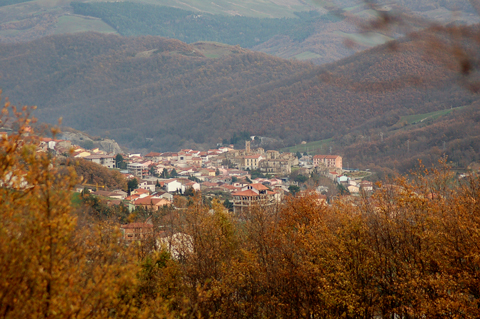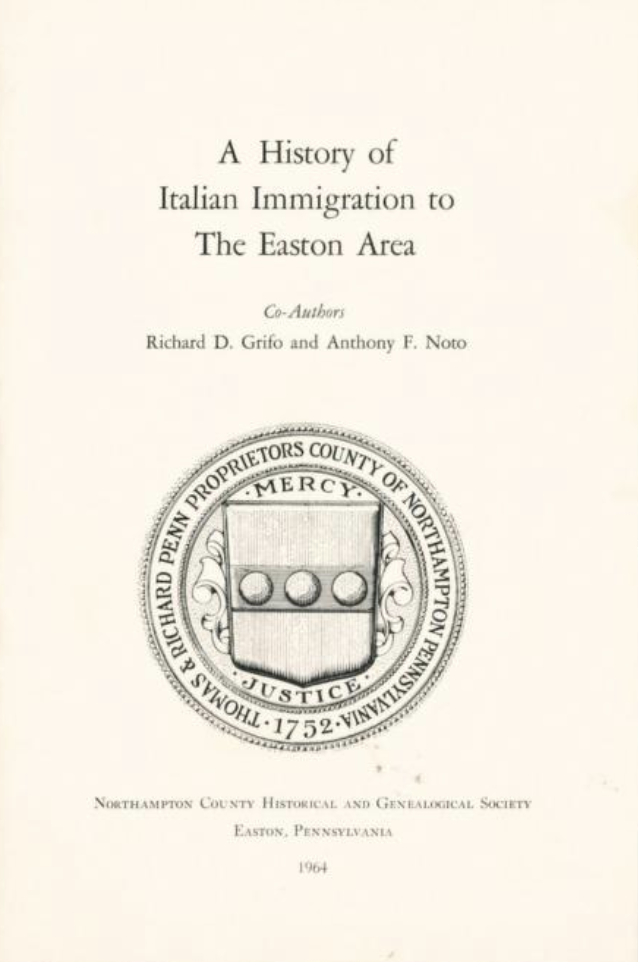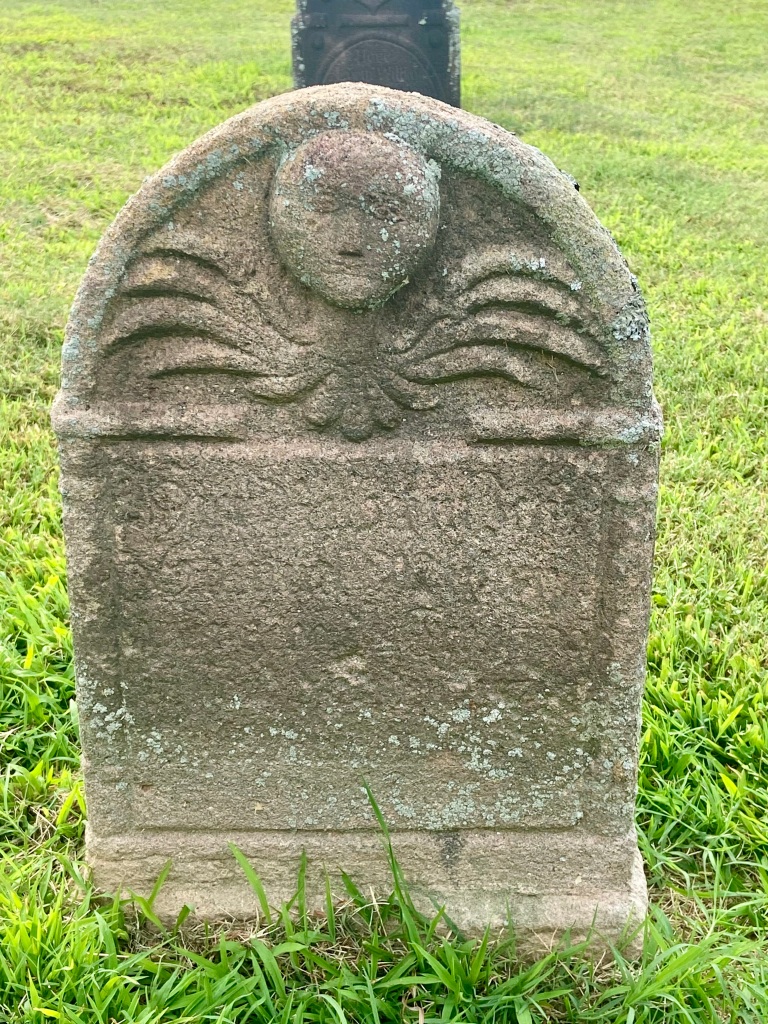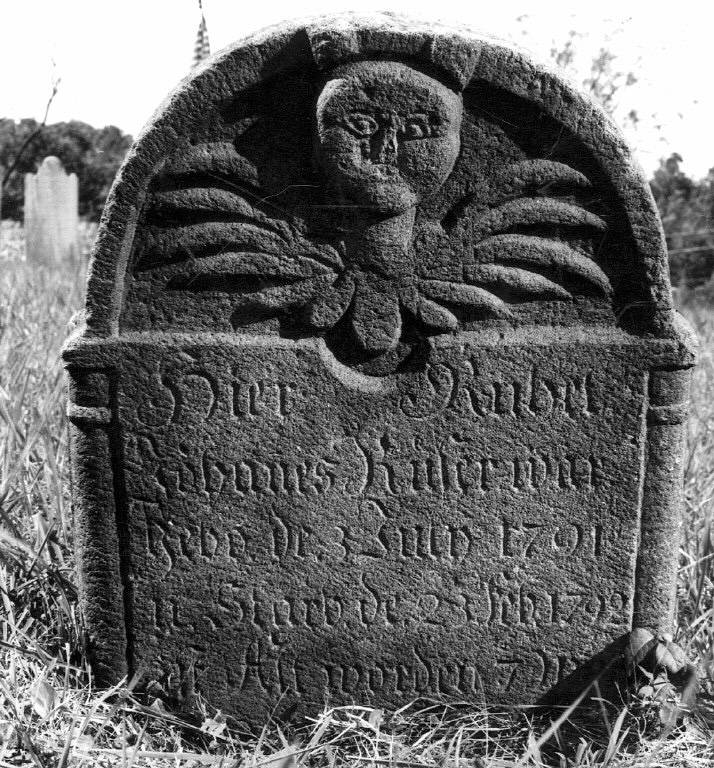In the Book of the Acts of the Holy Apostles we read that after our Lord’s resurrection from the dead he showed himself alive to his Apostles and disciples, and spoke “of the things pertaining to the kingdom of God.” The writer goes into no detail, but states simply this bare fact. The author of this book in writing about S. Peter’s Pentecostal sermon which converted 3000 souls, adds that “they continued steadfastly in the Apostles’ doctrine and fellowship, and in the breaking of bread, and in prayers.” And further on in the Acts he writes of the infant Church and the contemporary Christians, “they continued daily with one accord in the temple, and breaking bread from house to house.” The Apostles on the Day of Pentecost were ready to give the Sacraments of the Church to those who were being brought into its fellowship.
In establishing the Sacramental Rites and customs the Apostles began apparently by doing, what they had seen our Blessed Lord do, especially in regard to the Holy Eucharist, for this he had instituted amidst such dramatic surroundings and with such solemnity that they could never forget its slightest word or action. According to contemporary writings the first celebrations of the Mass consisted of a solemn recitation of the words of consecration as spoken by our Lord in the Upper Room, accompanied with the breaking of the bread and the blessing of the cup, the recitation of the Lord’s Prayer (since this form was in the Apostles’ mind closely and intimately bound up with the Master), and a Hymn, for the Synoptists tell us that on Maundy Thursday night after the institution of the Eucharist a hymn was sung before they went out to the Mount of Olives.
When our Blessed Lord instituted the Holy Eucharist he gave his Apostles both the Sacred Bread as his Body and the Sacred Wine as his Blood in Holy Communion. This was followed as the practice of the Church in the early centuries, and has persisted to the present day in one manner or another throughout the long history of the Church. To receive Holy Communion under both the species of Bread and Wine, as our Lord gave to the Apostles, has been a universal practice of the Church throughout the ages. But it is interesting to note that as early as the writing of the Book of the Acts of the Holy Apostles the Holy Eucharist is known and referred to as the breaking of bread. In that early day there seems to be already a peculiar devotion to the Sacramental Body, and throughout the history of the Eucharist, even though Communion was generally given in both kinds, Eucharistic devotion centered more and more in the Sacred Host.
A close study of the Gospels and Epistles, and a scrutiny of our Lord’s own words give ample warrant for this discrimination. Over and over again our Lord speaks of himself as the Living Bread, as Food which man must eat, whereas he never speaks of himself as the Cup or as of Drink. In the 6th chapter of the Fourth Gospel we have his wonderful dissertation on the Bread of Life. The reference here in this great Eucharistic sermon to his Blood and the drinking of it seems to be only incidental in his discourse, for he speaks at such length and with such emphasis about the Bread of Life and the partaking of his Flesh. While no one would suggest for a moment that our Lord was here forecasting the practice of giving and receiving Holy Communion in one kind, it can be said quite definitely that this Eucharistic discourse of our Lord’s had a great deal to do with the development of Eucharistic doctrine, and gave the Church ample justification for the centering of her Eucharistic worship and devotion in the Sacred Species of the Sacramental Bread. This concentration of devotion in the Sacred Host is rather a practical than a theological matter. It is difficult to move the Chalice. It is very hard to prevent irreverence in its administration. It is impossible chemically to reserve the Sacred Species of Wine. These difficulties are not present in the administering and reserving of the Sacred Host.
In Apostolic days great emphasis was laid on the Unity of the Bishop with his priests. No occasion was overlooked to underline this essential one-ness between the Cathedral and the Parish Church. One of the many ways in which this Unity was symbolized was by the Bishop from his Mass sending a piece of his Consecrated Host to every parish Church in the city where he was celebrating. These bits of the Sacred Host consecrated by the Bishop were carried by the Deacons, and the piece of the Bishop’s Host was deposited in the Chalice of the Priest’s Mass in his parish Church. This Unity of the Church, symbolized by the Eucharistic Body of our Lord in the Mass, is the theme of one of our most beloved Communion Hymns, “O may we all One Bread, One Body be, in this blest Sacrament of Unity.” We have a survival of the ritual of this sharing of the Bishop’s Mass and the Bishop’s Host with each parish in his See in the commixture at the Mass when the Priest today breaks a piece of the Host he has consecrated and places It in the Chalice with an appropriate prayer. And the Humeral Veil worn by the Sub-Deacon at the Solemn Mass is a survival of the time when he stood ready at the Bishop’s Altar to carry the Holy Fragment to the Church where he was assigned.
When Reservation of the Sacrament in order to communicate the sick and dying came into practice, it was found impracticable to reserve the Sacrament of the Precious Blood. Attempts to communicate the sick and dying with the Species of Wine were made in the beginning, but they had to be given up. Such things as silver and gold tubes were resorted to in order to communicate the sick and dying with the Precious Blood, but it was impossible to avoid irreverence and desecration in such communions. The question of cleansing the instruments thus brought into contact with the Holy Sacrament was an insuperable problem, so, primarily on practical grounds the Blessed Sacrament from earliest days has generally been reserved in one kind only.
This custom is protected by the Doctors of the Church who with one accord have agreed on the Doctrine of Concomitance. By this doctrine the Church declares that our Lord is wholly and entirely present in the smallest crumb of a Consecrated Host and in the tiniest drop of the Consecrated Wine. Therefore one who receives a whole Host in Communion receives no more of our Lord’s Sacramental Body and his grace than he who receives only a small particle. And one whose lips are barely touched by the Sacred Species of the Chalice has received of our Lord’s Sacramental gifts as fully as one who grabs the Chalice with both hands and partakes with presumption. So the Church has always taught that a Communion made under the form of the Host alone or under the form of the Chalice alone is a whole and valid and sufficient Communion.
As Eucharistic devotion grew under the inspiration of the Holy Ghost, it centered as we have said above in the Sacred Host. Because of the reverent necessity to reserve under this one kind only, and because theologians substantiated the practice as it developed, the Church found justification for the custom in the teaching of our Lord and of S. Paul, in the emphasis they both lay upon the Living Bread, and also in the striking incident that it was in the Breaking of Bread that the Risen Christ was made known to the disciples at Emmaus on the first Easter night.
When processions of the Blessed Sacrament came into being and the Rite of Benediction was framed, it was the Sacred Host that was carried in procession, it was the Sacred Host that was exposed in the Monstrance. This is a development, we admit, but a development under the tutelage of the Holy Ghost, who was sent among other reasons that he might guide us into all truth. This development in Eucharistic practice did not emerge full-blown, but appeared slowly through the years, and has been verified from age to age in the experience of the Church and in the testimony of the Saints.
There is no doubt whatever that during the early centuries of the Church Holy Communion was given to the faithful under both kinds, that is, the communicant received both the Body and the Blood in the Eucharist under the two forms of Bread and Wine. The Sacrament was reserved under the Species of Bread alone, so the sick and the dying and those who received Holy Communion outside the Liturgy received in one kind only, that is under the Species of the Holy Bread. Communion by Intinction was not unknown in the early Church, but where and when it was first introduced we do not know. We do know there was at first a great prejudice against this practice and it was most scrupulously avoided because it was too reminiscent of the traitor Judas who “dipped a sop” with our Lord, in the dish. By Intinction we mean dipping the Sacred Bread in the Sacred Contents of the Chalice, and communicating the faithful with the Host thus moistened, and placing It upon the tongue. Sometimes the Sacred Host was dipped in the Chalice and sometimes It was intincted or moistened with un-consecrated wine. This is the manner of giving Holy Communion in the Eastern Orthodox Church today, a mere vestige of which we have in the West in the Mass of the Pre-sanctified on Good Friday, when the Priest makes his communion after this fashion with the Consecrated Host (reserved from the Mass of Maundy Thursday) and the unconsecrated chalice. In the East the Species of Bread is reserved, and in Communion the Sacred Host is dipped in unconsecrated wine and given to the communicant on a spoon. Wherever the Chalice has been given directly to the laity and at whatever period in the history of the Church, there has always been a fear of irreverence and a dread of desecration on the part of the Priest, and a feeling of revulsion, more or less, on the part of the communicant. Pious efforts to avoid this situation have been the incentive for inventing other ways in which Holy Communion may be given and received. In the middle ages during the prevalence of wide-spread epidemics and general plagues, as a sanitary precaution, the faithful began of themselves to withdraw from the Chalice. The Church did not take the Chalice away from the people, the people themselves withdrew from the Chalice. Communion in one kind was the practice in England at the time of the Reformation, and has always continued there in certain quarters. The appellation of the term mutilated sacrament to communion in one kind, arose not in England but with the protestant reformers on the continent.
There is perfectly good precedent for Communion in all three ways, both kinds, one kind, and intinction. And all three ways of administering Communion are still practiced in the Catholic Church today. We cannot say that any one or two of the ways is catholic to the exclusion of the other. Any one is quite as catholic as the other two. The Eastern Orthodox still communicate the faithful by Intinction, and as far as we know by Intinction only. In the Latin Church of the West, that is in the Roman Catholic Church, Communion is given by direction in one kind only under ordinary circumstances. There are groups in union with the Roman Catholic Church where Communion is given in both kinds, and at certain functions and on special occasions in the Roman Church itself, Holy Communion is given today in both kinds.
With us in the Anglican Church the primitive practice of Communion in both kinds has prevailed. Reservation has been in one kind only, and the sick and the dying and those who receive Holy Communion outside the Mass have received the Sacred Host only. In recent years, with our modern consciousness of germs and almost fanatical fear of contagion, great prejudice has arisen against the common drinking cup, and in most states of the Union there are laws which forbid its use. This same fear and prejudice has been carried into the Church, and already most protestant bodies have adopted in their communion services the use of individual communion cups.
But with these religious groups there is no real presence in their elements of Holy Communion, the rite is simply a memorial, and with them there is no irreverence or desecration in spilling or dropping either species. This prevailing fear has been met in the Episcopal Church by adopting the practice of Intinction. There is nothing wrong with the principle of Intinction, it is its method that is bad. Intinction is the exclusive method used in the three largest and most prominent Churches in this Diocese, and in these parishes we are told Holy Communion is available in no other way. Various methods of Intinction are noted. In two of these local Churches the officiating Priest dips the Host in the Chalice and places It in the hand of the communicant. If this is done for fear of spreading disease, what about the Priest’s fingers touching the contents of the Chalice and then the hands of the communicants, and so on, back and forth? In the other local Church the communicant retains the Sacred Host in his hand, and when the Priest follows with the Chalice, the communicant himself dips the Consecrated Host into the Chalice, and conveys It to his mouth. Here you have the fingers of all the communicants going into the Chalice. It would seem that in either of these ways one is more apt to spread disease than when the faithful receive directly from the common Cup.
The answer to these fears and prejudices is Communion in One Kind. At the last meeting of our General Convention in Cleveland this matter was brought before the attention of both houses. The House of Deputies, which is made up of Priests and laymen, passed a resolution endorsing the practice of giving Holy Communion either by intinction or in one kind, and authorizing the use of any of the three prevailing methods in administering Holy Communion in the Episcopal Church. Holy Communion in one kind did not seem to be very well known to our Bishops, and when the matter was brought before them for consideration, one Bishop thinking there might be a theological question involved, suggested that the matter be referred to the Lambeth Conference, so it was left there officially by the Bishops. In the meantime they took an “off-the-record” vote and upheld the decision of the House of Deputies. So as it now stands any Bishop can give his consent to either deviation from Communion in both kinds. But the Bishop’s permission is not necessary in the matter of Communion in one kind, for in this practice it is not the Church that withholds the Chalice, it is the communicant himself of his own free will who with-draws from the Altar after he has received the Sacred Host. But the Bishop who consents to the one deviation from Prayer Book direction must also consent to the other. If we want the House of Bishops to recognize the validity of Communion in one kind, we must begin to practice it, we must make it known. It would be a very sad thing, and it is a possibility, that the Bishops would approve giving Holy Communion by Intinction and definitely repudiate the giving of Holy Communion in one kind only.
The difficulty of communicating a large number of people in both kinds is perfectly evident to all who receive at a Sunday Mass in a large city Church. The general use of cosmetics and lip stick makes for great irreverence in the use of the Chalice by many who least intend it. (Every Sunday when I go back to the Altar after giving Holy Communion at the 8 o’clock Mass and receive the Chalice from the assisting Priest, and have to cleanse the rim of the Chalice with my own lips and tongue before taking the ablutions, I find the rim of the Chalice covered with lip-stick, and the sight and taste is not only repulsive to my natural senses, but it is a real strain to preserve a priestly reverence in consuming what remains.)
I do not want any communicant in this parish to do anything that violates his conscience, nor do I want any one to receive in one kind only either to please me or because they think it is more Catholic to do so. But I would like you all to give this matter your prayerful consideration. I recommend the practice to you most highly. Receiving in one kind will be a protest against the irreverence of Intinction which is growing very rapidly throughout our Church. It will give the Bishops an opportunity to observe its practicability, its reverence, and its simplicity. It will be another step in the direction of Catholic Unity. And it will be a great physical saving to your Priests. Our Blessed Lord is wholly present in the slightest crumb or merest drop of the Holy Sacrament. There is not a dissenting voice on this point among the Doctors of the Church. By with-drawing from the Chalice I am sure in a short time you will realize that the reverence for your communions and for the Sacrament Itself has increased. My final word though must be this: the important thing in Holy Communion, and I underline this with my heaviest pencil, the important thing in Holy Communion is not the way in which you receive, but the spirit in which you come to the Blessed Sacrament. That your Communion be a worthy one must always be your first and chiefest consideration.
S. Clement’s Quarterly (Philadelphia), June 1944, pp. 11-16.





